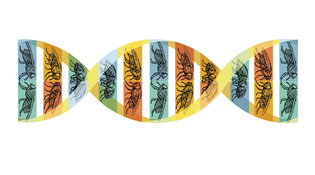 loading
loading
FindingsSleeping sickness and the tsetse fly Gregory NemecView full imageThe tsetse fly is the vampire of the insect world. In the latest epidemic, which started in the early 1980s, more than a million people died of sleeping sickness—a disease endemic to sub-Saharan Africa that is transmitted by the bite of an infected fly. The illness is caused by a parasitic microbe called a trypanosome; it also takes a toll on farm animals. Improvements in medical care and prevention have reduced human deaths, but efforts to create a vaccine have been unsuccessful, and the medications used in treatment are expensive and cause severe side effects. Now an international team led by Yale molecular biologist Serap Aksoy has sequenced the fly’s genome, offering hope that the scourge can be defeated. The team focused on identifying “targets of opportunity” in the fly’s life cycle, says Aksoy, including some involving its unusual reproductive system: “This insect is one of the few that practice viviparous reproduction. It nourishes a single larva at a time inside its uterus, with a kind of milk.” Through the sequencing, she and her colleagues found the proteins in the milk and the proteins that regulate their production during pregnancy. One promising strategy, she says, would be to interfere with the manufacture of the milk proteins. Another would be to block the fly’s reproductive output by disrupting the proteins that cleanse and reconfigure the internal organs that nurture larvae. Aksoy and her colleagues in the International Glossina Genome Initiative—named for the tsetse fly genus—published their findings in April in Science and several Public Library of Science journals. “This is the first step toward a magic bullet,” she says.
|
|
1 comment
-

Jeff Johnson (Calhoun '74), 11:41pm August 24 2014 |  Flag as inappropriate
Flag as inappropriate
The comment period has expired.This so-called "magic bullet" for the sleeping sickness problem may be aimed at the wrong target.
The actual problem is caused by the trypanosome parasite, but the proposed solution is aimed at eliminating -- or at least greatly reducing the population of -- the tsetse fly. Eliminating the fly might well have negative side-effects, since it presumably is a part of the food chain. A severe drop in the fly population could easily mean starvation for millions of bats and birds, which would have further effects further up the food-chain.
Wouldn't it be better to sequence the *microbe's* genome to facilitate the development of methods of blocking or attacking it?